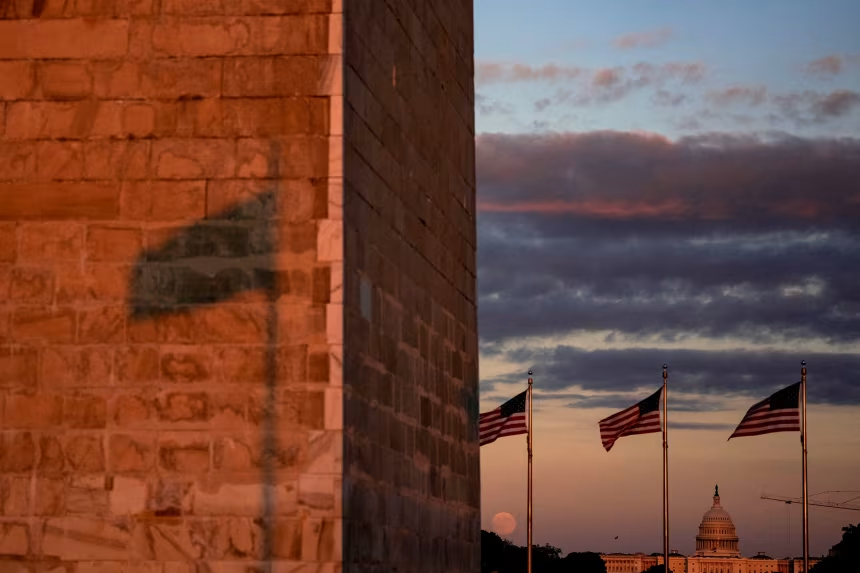When a U.S. Department of Agriculture employee set her out-of-office reply on October 1, she hoped the government shutdown would last only a few days. Instead, more than three weeks later, her unemployment claim is still “pending” — and her rent is due November 1.
“I filed for benefits the same day I was furloughed,” said the worker, who requested anonymity out of fear of retaliation. “The Massachusetts unemployment office told me it could take up to three months to get my first check. But that doesn’t help me now. The bills don’t stop just because the government did.”
She’s one of thousands of federal employees now scraping by, borrowing from relatives, and leaning on community support as the longest shutdown since 2019 stretches on with no end in sight.
Jobless claims surge to 2019 levels
Nearly 20,600 federal workers have applied for unemployment benefits during the first three weeks of the shutdown, according to new analysis from Andrew Stettner, director of economy and jobs at The Century Foundation, a progressive think tank.
That’s a massive jump from the 635 initial claims filed in mid-September, before the shutdown began. Maryland and Texas have seen the largest spikes — each with more than 3,100 filings — followed by Virginia and Washington state.
“We’re seeing unemployment claims for federal workers reach their highest levels since the record 35-day shutdown of 2018-19,” Stettner said. “It’s a sign of how real the financial strain is becoming.”
More workers are expected to file in the coming weeks as paychecks continue to be missed. For many, Friday marked their first full missed payday.
Uncertainty over back pay
Unlike in previous shutdowns, the Trump administration has raised doubts about whether furloughed employees will receive retroactive pay, despite a 2019 law guaranteeing it. The White House has also sought to lay off more than 4,000 workers during the impasse — a move that a federal judge temporarily blocked earlier this month.
That uncertainty is pushing many to file for jobless benefits even though the process can be slow and frustrating — and even though workers must later repay the benefits if back pay eventually comes through.
“It’s basically an interest-free loan,” Stettner said. “Federal employees should apply, but they should also be prepared for delays and red tape. It’s really, really hard.”
A system built for private employers
The Unemployment Compensation for Federal Employees (UCFE) program functions similarly to traditional state unemployment insurance but with key differences that slow things down.
Because state unemployment agencies already have wage records for private-sector employers but not for federal agencies, each application must be manually verified. That means states have to contact the furloughed worker’s agency to confirm their employment and salary — and the federal staffers who would normally handle those requests are furloughed, too.
“It’s a bureaucratic loop that feeds on itself,” Stettner explained.
States step in to help
Some state agencies are trying to ease the process.
Washington State’s Employment Security Department, which has received over 1,800 claims from federal workers, held a webinar that drew nearly 500 participants and plans another next week.
Maryland’s Department of Labor has launched a dedicated page for federal employees and contractors seeking guidance.
Utah’s Department of Workforce Services has published an FAQ to help furloughed staffers navigate eligibility requirements.
But for many, the assistance can feel like a drop in the bucket compared to the stress of making ends meet.
“It barely covers groceries”
For Ben Emmel, a senior analyst at the Government Accountability Office, the hurdles have been relentless. He lives in Maryland and serves as president of the International Federation of Professional & Technical Engineers Local 1921, representing federal employees across multiple agencies.
“I tried to apply two weeks ago but couldn’t complete the process because of an identity verification issue,” Emmel said. “I only got it resolved and filed my claim this Friday.”
Even once his benefits arrive, the amount will hardly make a dent. Maryland’s maximum weekly unemployment payment is $430 — less than a tenth of his usual paycheck.
“That’ll cover maybe one grocery run for a family of six,” he said. “We’re lucky my wife still has her job. But a lot of my coworkers don’t have that cushion.”
Contractors hit even harder
The shutdown’s ripple effects are also hitting federal contractors, who often don’t receive back pay once operations resume.
Sharon, a contractor for the Drug Enforcement Administration, said she’s been trying to file for unemployment for nearly two weeks without success. After multiple failed online attempts, she visited a Washington, D.C., unemployment office — only to leave with more questions than answers.
“I waited in line for hours,” she said. “They couldn’t even tell me if I was eligible. I’m super frustrated.”
“People are losing faith”
The shutdown, now entering its fourth week, has affected everything from food inspections to housing loans. But for those inside the system — the furloughed employees who once processed the benefits, verified the forms, and answered the calls — the irony is cruel.
“The very people who keep the country running are being told to sit home and wait,” said Emmel. “It’s demoralizing.”
The political standoff that triggered the shutdown shows no sign of resolution. Negotiations between Congress and the White House over spending and staffing levels have stalled repeatedly.
Meanwhile, workers like the USDA employee in Massachusetts are running out of time — and patience.
“I’ve worked for the government for 14 years,” she said quietly. “I’ve been through shutdowns before, but this one feels different. I don’t know if I’ll have a job to go back to.”
Until the checks start coming, she said, every day is about survival — and waiting for Washington to remember the people who make it work.

